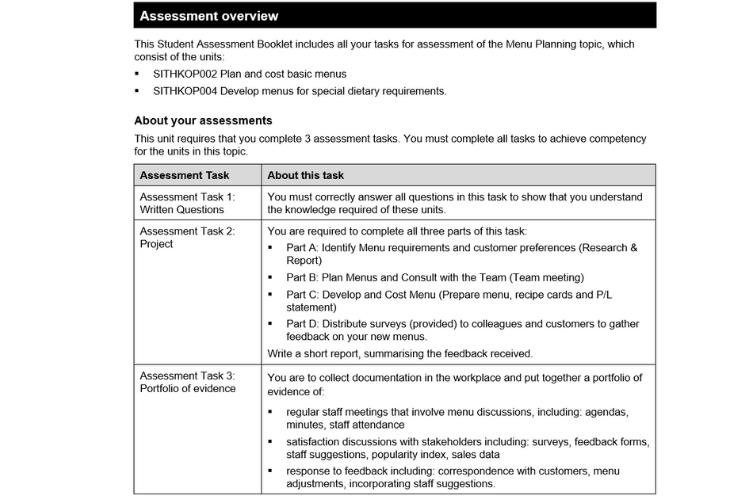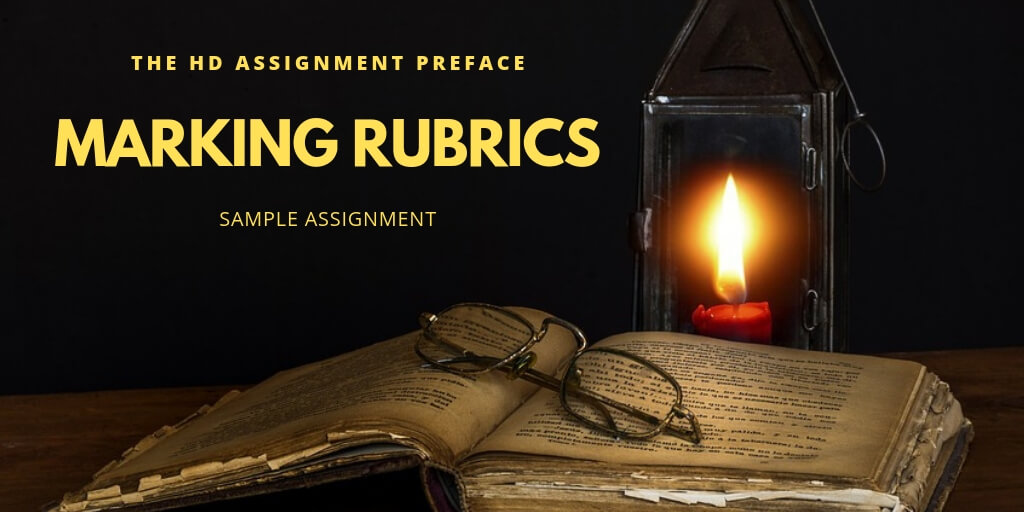
What Is A Marking Rubric?
A marking rubric is a tool used to assess a student's academic work, which outlines the marking criteria. It is used to evaluate the academic work submitted by students, including works like assignments, presentations, class participation, etc. The marking rubric provides the tool of criteria used to evaluate and mark any assignment.

Students need help with understanding a marking rubric meaning as understanding the rubric allows them to perform optimally to help them secure the maximum grades in their academic programme. They face various challenges in satisfying all the criteria listed in the marking rubric, as satisfying these criteria can be too demanding and challenging. They can take our assessment help for systematically planning their academic journey and making quality assignments that can help them secure HD grades on their marking rubric.
What Is The Purpose Of Using A Marking Rubric In Assignments?
The purpose of a marking rubric for assignments is multifold. They are essential for both the teachers and the students in any academic programme. The points describing the purpose of a marking rubric can be described as below:
- As an assessment tool: Marking rubrics are used to assess the student's performance in a systematic and planned manner. This is the primary purpose of the marking rubric. Rubrics can be tailored for each assignment and any academic programme to assess the learning objectives better.
- As a means to improve learning: Having a rubric allows students to use it as a guide to performing better in their academic journey. The rubric allows the student to reflect on their work, make satisfactory assignments and keep improving.

- As a communication tool: Rubrics are an effective way to communicate effectively between the student and the teacher. It describes in detail the requirements, expectations and learning objectives of the academic course and the assignments.
- Encourages fair marking: A marking rubric is a systematic assessment tool that describes in detail any assessment requirements. It thus provides for a system of fair and consistent grading and minimizes discrimination or discrepancies.
For example, an oral presentation marking rubric will be made to encourage critical thinking and presentation skills and describe the criteria like researching, writing and delivering content attractively and appropriately.
What Are The Characteristics Of A Good Rubric?
Before designing a marking rubric, the teachers and the staff need to understand the characteristics of a good rubric. They can take our help for designing an effective grading system as well. The following are some of the essential features of a good rubric:

- Criteria: A marking rubric should possess a list of criterion measures required to be met so that students can adequately understand the assessment requirements.
- Gradations: The rubric should describe the gradations students will receive based on the quality of the assignments that they will submit. The gradations can be quantitative or qualitative like excellent, good, average, needs improvement, etc.
- Descriptions: The description enables the students to understand, verify, and design their assignments more effectively. The description should describe the contents required to make the assignment perfect.
- Continuity: There should be continuity in the grading system because the difference in quality between a score of 4 and 3 should be the same as the difference in quality between the score of 4 and 5.
- Reliability: A good rubric should act as a reliable, consistent tool that provides the measure for judging all of the assignments in an equal manner. For example, students will receive identical scores based on their quality even when their assignments are evaluated by different teachers because the marking rubric is reliable.
- Validity: A valid marking rubric focuses on scoring what is significant to the topic, assignment and performance and does not get involved in marking what is only catchy for the eye, easy to read and lacking in quality.
For example, a speech marking rubric will describe the criteria, grades, descriptions, which will enable the student to write and deliver speeches that will enable them to receive good grades. If you need any help with understanding the speech marking rubric, you can get the help of our online assignment experts.
What Is The Difference Between A Rubric And A Scoring Guide?
The essential points of difference between a rubric and a scoring guide can be described as below:
|
MARKING GUIDE |
MARKING RUBRIC |
|
A marking guide is a guide for the teachers to grade based on concepts. |
A marking rubric is an assessment tool used by both the teacher and the student to fulfil and evaluate the requirements of a program. |
|
Example: When evaluating a poster, a marking guide will include elements like analyzing the symbolism, colour scheme, negative space and so on. |
Example: A marking rubric for a poster clearly describes that if you match a certain number of criteria, you get an A grade or other grades based on the measure that you can meet. |
|
Marking guides are simple guides and not always descriptive, reliable and valid. |
Even while possessing much room for creativity and personal expression, marking rubrics are more consistent, reliable and valid. |
What Are The Marking Criteria?
Marking criteria are the most significant aspect of any marking rubric. Marking criteria communicates effectively to the students what is expected of them. These are the standards of judgements for any assessment that the teacher has set. Going through the marking criteria will help the students design their assignments better and act as a tool for the teachers to mark all the papers consistently.
For example, when preparing a marking rubric for persuasive writing, you can describe the criteria as quality of research content, the number of arguments, strengths and weaknesses of the arguments, style of writing, etc.
What Are The Three Types Of Marking Rubrics?
There are essentially three main types of marking rubrics commonly used by good teachers across esteemed schools and universities. The three types of marking rubrics are:

- Analytic rubrics: An analytic rubric is a grid structure that lists the assessment criteria in the left column and levels of performance written in the top rows. The cells will describe the specified criteria for achievement of any performance level or grade.
- Developmental rubrics: The purpose of a developmental rubric is not to evaluate an end product or performance. The primary purpose of a developmental rubric is to assess the students' level of development in terms of skills, values, knowledge, etc.
- Holistic rubrics: A holistic rubric consists of only one scale which describes all the criterion measures. Based on a holistic approach, the assessor will assign a single score based on the overall evaluation of the work and thus describe the performance in a single score.
How Do Rubrics Help Students?
Students often wonder how rubrics help students and do not pay much attention to the rubric system. This is one of the main reasons why most students do not score well on their assignments. Our experts are trained to perfectly analyze the marking rubrics and writing assignments to suit the rubric's needs. The rubric system can help the students in the following ways:
- Provides the opportunity to see and understand clearly the requirements of the assessment
- Provides the opportunity to judge and plan assignments in such a manner that can maximize their learning and even their grades
- Understand how they are given marks and grades
- Understand why they have received any grade or mark based on the rubric
- Acts a system of self-evaluation for the students and feedback
- Acts as an initial narrative and framework for feedback.
Thus marking rubrics is very important for students. A dissertation marking rubric can go a long way in helping the students to write A-grade dissertations that will be research-based, well-written and satisfactory. Thus are some of the benefits the students can receive by understanding any report marking rubric.
What If There Were No Rubrics In Assignments?
Rubrics are essential tools for assessment. If there were no rubrics in academic programs, it would become problematic for both teachers and students to communicate appropriately about the expectations and requirements of any assessment. Students will not have any system to help them design their assessments in a better way.
The absence of the marking rubric students will confuse the students in making assignments and the teachers in the marking process. An absence of any form of rubric system is likely to result in a grading system that is not consistent, reliable, valid and systematic correct evaluation of all the papers. A teacher will likely reward two similar papers differently, or different teachers will evaluate the same paper differently.
Why Are Rubrics Important To Teachers In Facilitating Learning?
Rubrics are not only critical to students but extremely important as well as a necessary tool for teachers. Marking rubrics are essential to the teachers in the following ways:
- Ensures that the marking is reliable
- Provides the opportunity to plan the course in a better way
- Allows the opportunity to list down the course objectives
- Works as a communication tool between the students and the teachers
- Valid scoring-Ensures that different markers will award the same grades
- Reliable scoring- ensures that the same marker will evaluate all papers in the same manner
- Ensures that the assessors are measuring what is being intended to measure
- Acts as part of feedback, making the process of providing feedback more efficient and cost-effective.
How to Write Marking Rubrics?
Many skilled staff members working in an academic institution and teachers face various problems when it comes to writing and designing the marking rubric systems. A few tips on writing marking rubrics are:
- Understand the requirements of the course and assignment
- Decide on the heading to be included in your criteria
- Construct a grid
- Begin describing the criteria and requirements
- Decide on the weighing of each criterion and requirements described and describe them clearly
- Make sure that it is reliable, valid and consistent
- Make it compulsory to use the rubric in all stages of evaluation
Thus are some of the things which should be taken care of when making a report marking rubric.
Marking Rubric for Assignment
Our academic writers are experts in helping teachers prepare to mark rubrics and helping students understand marking rubrics and write quality assignments based on the marking rubrics. A few snapshots of marking rubrics are provided below, which our experts analyzed and designed such a perfect assignment that the student received HD grades on the assignment:




Assignment Help in Australia
Sample Assignment is the Number 1 Trusted Brand for assignment help in Australia, Canada, UK, and various other countries. We provide academic assistance for writing dissertations, assignments, reports, quizzes and even online exams. We provide an HD grades guarantee, and our customer service is available 24*7. We provide 100% original assignments with a free Turnitin report which is well researched and well written. We also provide various discounts to our clients, which they can take the optimal advantage of and receive assignment help at meagre prices.
So, what are you waiting for? Please send us your marking rubric and receive quality assignments and by taking our assessment help service and make your academic journey smooth.




Loved reading this Blog? Share your valuable thoughts in the comment section.
Add comment